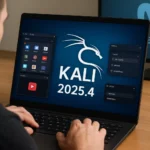The UK government has approved a £1.5 billion credit guarantee for Jaguar Land Rover (JLR) under UK Export Finance’s Export Development Guarantee (EDG), helping stabilize supplier payments and logistics after a cyberattack forced production interruptions. The five‑year facility is designed to de‑risk bank lending so JLR can access larger financing on better terms and restart operations safely.
JLR cyberattack: operational disruption and suspected threat actors
In early September 2025, JLR reported significant disruptions to retail and manufacturing following a cyber incident. UK dealers were unable to register new vehicles or ship parts, and production at the Solihull site (Land Rover Discovery, Range Rover, Range Rover Sport) was taken offline. Staff at Halewood were advised not to attend shifts, and facilities in China, India, and Slovakia also paused work.
JLR confirmed unauthorized access to “some data”, without specifying whether customer information was affected. A group calling itself Scattered Lapsus$ Hunters—linked in open‑source reporting to actors associated with Scattered Spider, LAPSUS$, and Shiny Hunters—claimed responsibility, posting screenshots allegedly from the company’s SAP environment and asserting it deployed ransomware.
How the UK Export Finance guarantee works—and why it matters now
EDG is a state guarantee for a commercial loan: the government does not lend directly but covers a substantial share of lender risk if a borrower defaults. For JLR, the guarantee lowers financing costs and increases available liquidity at a time of operational stress. According to Business and Trade Secretary Peter Kyle, the measure is intended to “support the supply chain and safeguard jobs.” The scale is material: JLR employs around 39,000 people, produces over 400,000 vehicles annually, and supports at least 100,000 roles globally.
Economic impact: from OEM shock to systemic supply chain risk
Analysts estimate direct downtime losses at £5–10 million per day. With £29 billion in revenue in 2024, JLR can likely absorb the shock, but small and mid‑sized suppliers face acute cash‑flow risk, making fast liquidity deployment critical. Historical precedents underscore the systemic nature of such events: the 2017 NotPetya attack cost Maersk roughly $300 million, and a 2022 supplier breach led Toyota to suspend operations across 14 plants in Japan for a day. The UK’s NCSC consistently warns ransomware remains the most acute cyber threat to national businesses, with supply chains a preferred pressure point for adversaries.
Threat actor tradecraft and priority defenses
ERP/SAP compromise and double extortion
Access to ERP systems such as SAP gives attackers leverage over core processes—from production planning to procurement and logistics. Contemporary groups typically use double extortion: they first exfiltrate sensitive data and then encrypt systems, increasing coercive pressure even when backups exist. Past joint advisories from security agencies and researchers have highlighted active exploitation of misconfigured and unpatched SAP applications, reinforcing the need for rigorous ERP hardening and continuous monitoring.
Engineering a resilient restart across IT/OT
Manufacturers should prioritize: strict IT/OT network segmentation; MFA and privileged access management (PAM) for admin and vendor accounts; EDR/XDR on endpoints and servers; offline, immutable backups with regular restore testing; least‑privilege/Zero Trust access; rapid patch management; DLP and encryption for sensitive data; and tabletop exercises covering executive, legal, and supply‑chain communications. Coordinated, staged restarts reduce the risk of reinfection and help restore throughput safely.
What’s next for JLR and the UK automotive sector
JLR has indicated a planned resumption of operations in the coming days while working with the NCSC and law enforcement to bring key systems back online securely. High‑profile state support can also draw attention from extortion groups; robust sector‑wide indicator‑sharing, procurement security baselines, and third‑party risk management are essential to deter follow‑on attacks.
The JLR incident highlights that cyber risk is a core business‑continuity and macroeconomic issue. Automotive leaders should accelerate network segmentation, inventory critical business processes, test disaster recovery plans, and assess supplier risk. Early detection and response shorten outages and reduce total loss. Organizations can stay ahead by following NCSC guidance, joining sector information‑sharing communities, and continuously exercising incident playbooks spanning both IT and OT.






